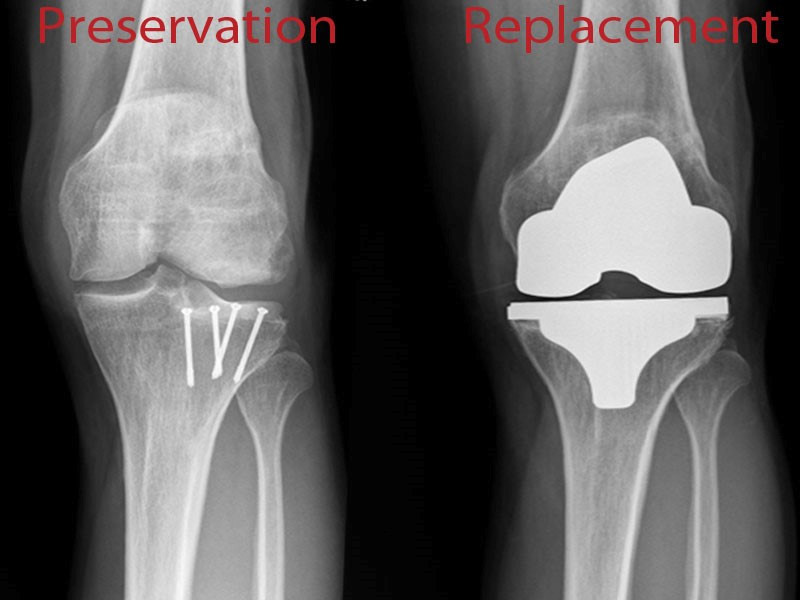
Most people are familiar with joint replacement. It is replacing the surface of a joint with a metal, ceramic and/or plastic device to take the place of the worn out joint.
Joint preservation is a category of treatment that focuses on realigning joints or putting a live surface covering on the joints. The goal is to avoid the mechanical devices used in joint replacement. If you suffer from chronic joint pain, both options are attractive. The determining factor is the extent of the joint’s damage — the more damage, the more likely a full replacement is necessary. Joint preservation is a great option for young patients or patients where only a small part of the joint is damaged.
The Options Explained
As the name suggests, joint replacement replaces your damaged joint with an artificial one. Joint replacement is a very successful procedure historically. However, if the damage to your joint is repairable or very limited, replacement may not be ideal. Full replacement is not something that can be undone. Once the process is completed, you’re committed! Issues can arise such as metal sensitivity, debris generation and loosening of the implants.
In contrast, joint preservation maintains, heals and rehabilitates your existing joint to enhance function and decrease pain. The overarching goal of preservation is to avoid further degradation of joint health. Preservation aims to restore the normal function and health of your joints without resorting to a prosthetic replacement. The types of joint preservation procedures include non-surgical and surgical treatments.
Avoid Surgery If Possible
For many individuals suffering from joint pain, surgery of any type may not be necessary. Joint Preservation Institute recommends avoiding surgery for as long as you can — it’s better to stick with restorative therapy until surgery becomes necessary.
Joint preservation is the preferred approach for patients with minimal or little damage. If you have plenty of healthy cartilage tissue remaining, joint preservation may be the better choice.

As a general rule, younger patients tend to respond better to preservation than older individuals. You may discover that a muscle strengthening or weight loss regimen reduces joint stress and boosts joint function. Physical therapy aimed at increasing flexibility and muscular strength may also be helpful.
There are a number of non-surgical treatments available. These include:
- Corticosteroid injections
- Platelet-rich plasma therapy
- Stem cell treatment from bone marrow or from fatty tissue
When to Consider Joint Preservation Surgery
Joint preservation surgeries include such treatments as cartilage repair with patches or grafts from another part of the joint or from a donor as a transplant. More involved procedures include correcting deformities that will help improve the mechanics of the joint and lead to dramatic pain relief. These are called osteotomies (cutting of the bone). The key is to have the right treatment for your condition.
When Is Joint Replacement Necessary?
Joint replacement is the preferred approach for patients with severe or long-term damage to their joints. Joint replacement is generally very safe, and recovery times have never been faster. However, it is wise to avoid this type of surgery until all other options have been exhausted.
Contact the Joint Preservation Institute Today
Both joint preservation and joint replacement are major medical procedures. If you have questions about these options, feel free to contact us for a personal consultation.








 Joint Preservation vs. Replacement: What’s Your Best Option?
Joint Preservation vs. Replacement: What’s Your Best Option? 







